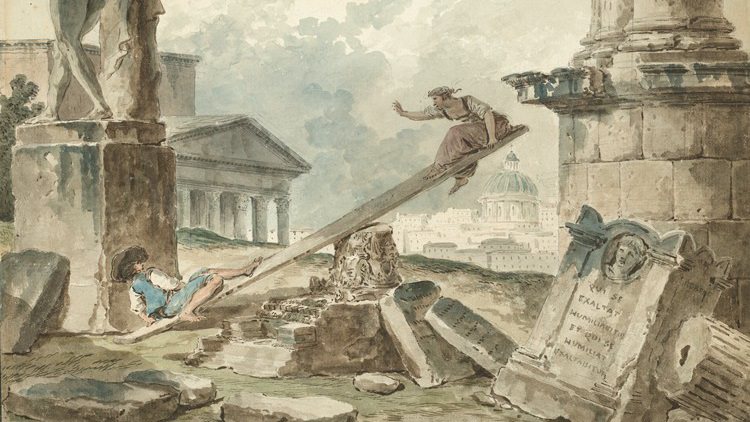Throughout his career, Hubert Robert combined elements of ancient art and architecture that he had studied in Rome to create imaginary views. In The See-Saw, perhaps one of his most humorous works, he made the playful repurposing of ancient splendor his subject and cleverly commented on power dynamics of his own day by referencing monuments of Roman history.
This talk is part of a series investigating power dynamics in artworks across the collections. Considering intersections of art and power, our curatorial team discusses how artists engage with social and political crises, use art to upset systems of power, and imagine more equitable futures.
Led by:
Joachim Homann, Maida and George Abrams Curator of Drawings, Division of European and American Art
Margaret Morgan Grasselli, Visiting Senior Scholar for Drawings, Division of European and American Art, and Visiting Lecturer, Department of History of Art and Architecture, Harvard University
Work explored:
Hubert Robert, French, The See-Saw, c. 1786. Pen with black ink, brown wash, and watercolor over traces of black chalk on off-white antique laid paper. Harvard Art Museums/Fogg Museum, Gift of Charles E. Dunlap, 1956.250.



